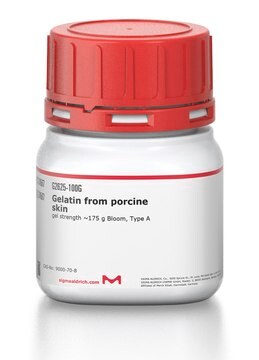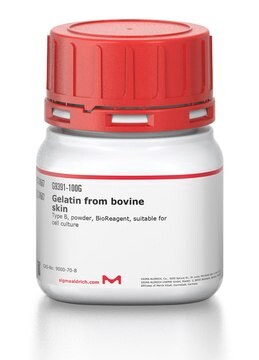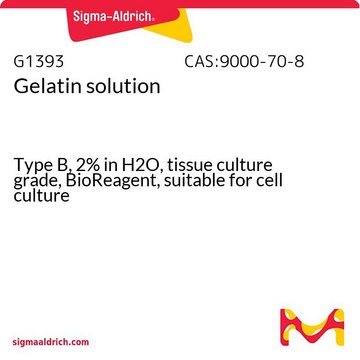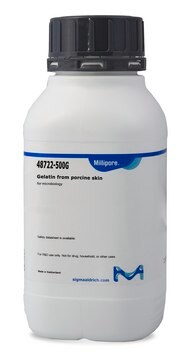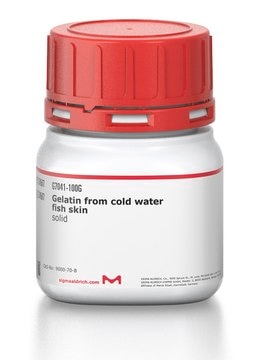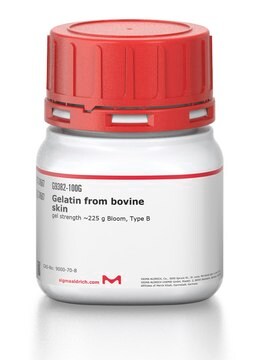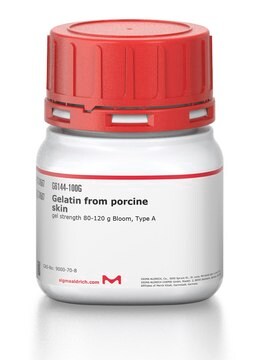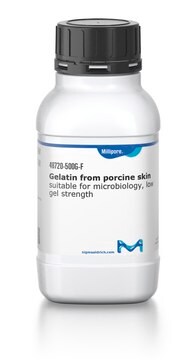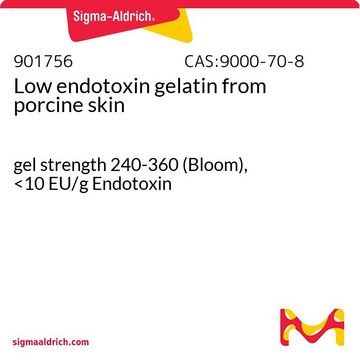G2500
Gelatina
gel strength 300, Type A
About This Item
Prodotti consigliati
Origine biologica
Porcine skin
Livello qualitativo
Tipo
Type A
Saggio
70-90% (biuret)
Forma fisica
powder
tecniche
cell culture | mammalian: suitable
Resistenza del gel
~300 g Bloom
Solubilità
H2O: soluble 50 mg/mL
Cerchi prodotti simili? Visita Guida al confronto tra prodotti
Descrizione generale
Applicazioni
- for coating glass-bottomed plates for culturing A375 cells and in gelatin degradation assay
- for coating glass slides in the histological studies with brain sections
- in the synthesis of gelatin methacrylate (GelMA) prepolymer for encapsulating cells on to 3D printed hydrogels
- to prepare thiol-functionalized gelatin (GelSH) hydrogel for 3D projection bioprinting
Azioni biochim/fisiol
Componenti
Avvertenza
Nota sulla preparazione
Codice della classe di stoccaggio
11 - Combustible Solids
Classe di pericolosità dell'acqua (WGK)
nwg
Punto d’infiammabilità (°F)
Not applicable
Punto d’infiammabilità (°C)
Not applicable
Dispositivi di protezione individuale
Eyeshields, Gloves, type N95 (US)
Certificati d'analisi (COA)
Cerca il Certificati d'analisi (COA) digitando il numero di lotto/batch corrispondente. I numeri di lotto o di batch sono stampati sull'etichetta dei prodotti dopo la parola ‘Lotto’ o ‘Batch’.
Possiedi già questo prodotto?
I documenti relativi ai prodotti acquistati recentemente sono disponibili nell’Archivio dei documenti.
I clienti hanno visto anche
Articoli
Discussion of synthetic modifications to gelatin, improving the three-dimensional (3D) print resolution, and resulting material properties.
Papain is a cysteine protease of the peptidase C1 family. Papain consists of a single polypeptide chain with three disulfide bridges and a sulfhydryl group necessary for activity of the enzyme.
Il team dei nostri ricercatori vanta grande esperienza in tutte le aree della ricerca quali Life Science, scienza dei materiali, sintesi chimica, cromatografia, discipline analitiche, ecc..
Contatta l'Assistenza Tecnica.
